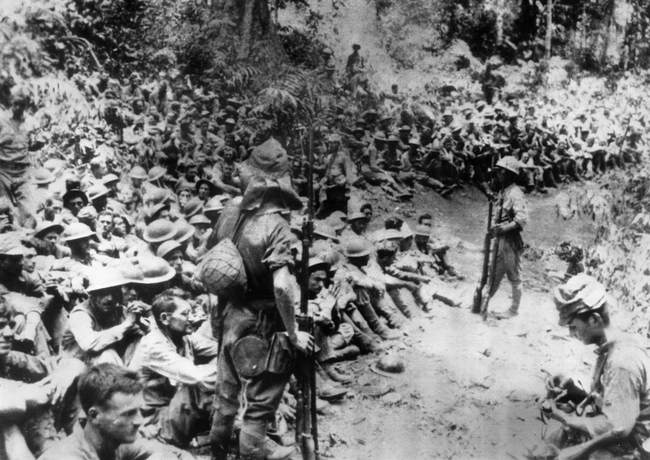World War II was one of history’s deadliest conflicts. The Pacific theater of that conflict was particularly nasty; my mother’s oldest brother served as a Marine in that theater and harbored bad feelings towards Japan for the rest of his life, despite that nation’s dramatic post-war changes. And in that theater, one of the greatest war crimes was the Bataan Death March.
In that event, roughly 76,000 prisoners of war, 10,000 of them Americans, the balance Filipinos, were force-marched from the tip of the Bataan Peninsula to a town called San Fernando, where they were crammed in rail cars and taken to Capas, where they were forced to walk another seven miles to the former training base, Camp O’Donnell, where they were held prisoner. Only 54,000 of the original 76,000 survived the march; captives were beaten, shot, bayoneted, and beheaded en route if they faltered or fell. After reaching Camp O’Donnell and until the end of the war, 26,000 more Filipinos and 1,500 Americans died while being held as POWs by the Japanese. Many of those who died were buried in mass graves, and since the end of the war, the United States has been making efforts to identify remains and bring them home for burial.
Today we learn that the remains of one more American serviceman are, after 82 years, coming home.
A 20-year-old soldier from Louisiana who died as a prisoner of war during World War II has been accounted for, the Defense POW/MIA Accounting Agency (DPAA) said Monday.
U.S. Army Pfc. Joseph C. Murphy was serving in the 31st Infantry Regiment in the Philippines in 1942. While he was serving, Japanese forces invaded the Philippine Islands, sparking months of intense fighting in the region. During this time, thousands of U.S. and Filipino service members were captured as prisoners of war.
Murphy was among those reported captured when U.S. soldiers in the Bataan peninsula surrendered to Japanese forces, the DPAA said, and was one of tens of thousands of POWs subjected to the Bataan Death March in the spring of 1942. After the 65-mile trek, Murphy and other soldiers were held at the Cabanatuan POW Camp #1.
Murphy’s remains were identified after an effort began in 2019 to use DNA as well as dental records and other anthropological data to identify the remains.
See Related: The King’s Speech: Charles III Speaks in Normandy and Shows Biden What Class Looks Like
Love Has No Age Limit: 100-Year-Old WWII Vet Marries 96-Year-Old Sweetheart Near Beaches of Normandy
It’s to the credit of the DPAA that, after over eight decades, this effort is still ongoing and they are still bringing our men home. It’s a painstaking process; of that we can have no doubt, but it’s worth doing, even at this distance in time. Not only does it show respect for our fallen from that conflict, but it serves as reassurance to today’s soldiers, airmen, sailors, and Marines that if you fall in a foreign land, America will spare no effort to bring your remains back.
Now that he has been accounted for, a rosette will be placed besides Murphy’s name on the Walls of the Missing at the Manila American Cemetery and Memorial. He will be buried in his Louisiana hometown in early August.
This is the proper form. Thousands of Americans fell in the Bataan Death March and the subsequent imprisonment. The legitimate roles of our federal government are few, but expending some resources to identify those who have fallen defending our nation and our constitution is a worthwhile effort, and we can hope that Pfc. Murphy’s family, at long last, has some closure.


